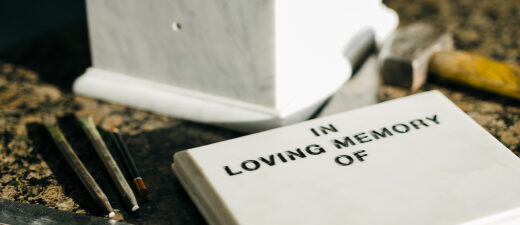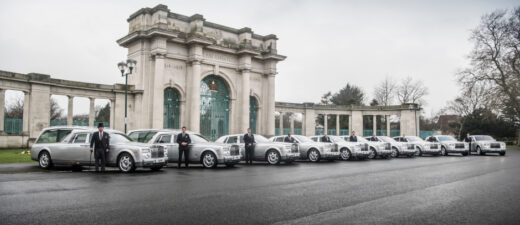Religious Funerals in Nottinghamshire, Derbyshire and Mansfield
For more than 115 years, A.W. Lymn has been supporting families to lay their loved ones to rest from all backgrounds, faiths and cultures. We have experience in all types of religious funerals with particular, detailed expertise in many.
Anglican funerals (Church of England)
The Anglican Church is known as the Church of England in England, as the Episcopal Church in Scotland, as the Church of Wales in Wales and as the Church of Ireland in both Northern Ireland and the Irish Republic. Services are regulated by powers delegated by Parliament to the General Synod of the Church.
When a Christian dies, it is seen as the end of their life on earth. A funeral is held for friends and family to grieve for the person who has died and give thanks for their life.
If someone is on their deathbed, a minister will prepare them for death. This is most likely after a long period of illness. Prayers of preparation and reconciliation may be said, with only the minister in the room. Family and friends can participate in the Lord’s Prayer, the Word of God and Holy Communion.
Often, the deceased will have left information in his/her will concerning what they want to be included in the funeral service (hymns, prayers) and will also say whether they wanted to be buried or cremated.
The service
The funeral is held a few weeks after death. It can either take place in a church or at a crematorium. It usually includes:
- The Gathering: the minister will open the service with a short reading from the scriptures.
- Readings and sermon.
- Eulogy and Personal readings, reflecting on the person’s life and their role in the Christian church. A family member or friend may wish to read out a poem or a passage from the Bible.
- Prayers: prayers of thanksgiving, penitence and readiness for death are said.
- Reflection: Silent time for reflection when the congregation is given a short moment to reflect on the deceased.
- Commendation and farewell: The minister speaks these words: “Let us commend (the person’s name) to the mercy of God, our maker and redeemer.” The minister then reads a prayer of entrusting and commending.
- The committal: this is probably the most solemn moment of the service. At a burial, this is when the coffin is lowered into the grave. At a cremation, the curtains are generally closed around the coffin, although may at the family’s request remain open. “We therefore commit (his or her) body to the ground; earth to earth, ashes to ashes, dust to dust; in the sure and certain hope of the Resurrection to eternal life.”
Roman Catholic funerals
Catholics believe in Heaven and Hell, but also in Purgatory. This is a place for those who have died in a ‘state of grace’ (that is, they have committed forgivable sins) and may not go straight to Heaven.
The service
A Catholic funeral can be with or without Mass:
- The Vigil for the Deceased: this is a service of prayers, songs and homilies either at the home of the deceased or in church, before the day of the funeral.
- Introductory rites. The priest greets the congregation and says: “The grace of our Lord Jesus Christ and the love of God and the fellowship of the Holy Spirit be with you all.” He leads the coffin and congregation down the church aisle. Holy water is sprinkled and there is an opening song and prayer.
- Liturgy of the Word: sermons from the Bible are read out, as well as a homily (a practical rather than theological sermon) and a Psalm.
- Liturgy of the Eucharist: there is a preparation of gifts, a Eucharist prayer is said and Holy Communion is received.
- Final commendation: Mass ends, prayers are said and the coffin is taken out of the church.
- Rite of Committal: prayers are said by the final resting place (at the graveside for burial and before the curtains close for cremation).
Muslim funerals
Muslims believe that the good deeds done in life will yield entry into Paradise on the Day of Judgment or the Last Day, when the world will be destroyed.
Many Muslims believe that until the Last Day the dead will remain in their tombs and those heading for Paradise will experience peace while those heading for Hell will experience suffering.
When a Muslim is approaching death, family members and very close friends are present, to offer the dying person hope and kindness, and encourage the dying person to say the ‘shahada,’ confirming that there is no God but Allah.
According to Islamic law (‘shariah’), the body should be buried as soon as possible from the time of death, which means that funeral planning and preparations begin immediately and there is no viewing before the funeral.
The preparation and undertaking of the funeral
- Preparation of the body for burial, washing by close same-sex family members or surviving spouse (‘Ghusl’) and shrouding (‘Kafan’).
- The body is washed three times, or more if necessary, but always for an odd number of times and in a specific order – upper right side, upper left side, lower right side, lower left side.
- Women’s hair is washed and braided into three braids and the body is covered in a white sheet.
- To shroud the body, three large white sheets of inexpensive material should be laid on top of each other with the body placed on top. Women should, at this point, be dressed in an ankle-length sleeveless dress and head veil.
- Where possible, the deceased’s left hand should rest on the chest and the right hand should rest on the left hand, as in a position of prayer, with the sheets folded over the body, first the right side and then the left side, until all three sheets have wrapped the body and the shrouding is secured with ropes, one tied above the head, two tied around the body, and one tied below the feet.
- The body should then be transported to the mosque for funeral prayers, known as ‘Salat al-Janazah’, performed by all members of the community, recited at the mosque, not inside the mosque but in a prayer room or study room, or in the mosque’s courtyard, with those praying facing Mecca in at least three lines, with the male most closely related to the person who died in the first line, followed by men, then children, then women.
- The body is then transported to the place of burial, traditionally with only men allowed to be present, though in some communities all mourners, including women, will be allowed at the graveside.
- Once the body is in the grave, a layer of wood or stones are placed on top of the body to prevent direct contact between the body and the soil that will fill the grave and each mourner will place three handfuls of soil into the grave.
- Once the grave has been filled, a small stone or marker may be placed at the grave so that it is recognizable and traditionally it is prohibited to erect a large monument on the grave or decorate the grave in an elaborate way.
After the funeral and burial, the immediate family will gather to receive visitors and the community provide food for the family for the first few days of the mourning period (usually three days). - Generally, the mourning period lasts 40 days, but depending on the degree of religiousness of the family, the mourning period may be much shorter. Widows are expected to observe a longer mourning period, generally of four months and ten days when they are prohibited from interacting with men whom they could potentially marry.
- It is acceptable in Islam to express grief over a death with crying and weeping at the time of death, at the funeral, and at the burial but wailing and shrieking, tearing of clothing and breaking of objects, and expressing a lack of faith in Allah are all prohibited.
- Organ donation is acceptable for Muslims, as it follows the Qur’an’s teaching that ‘Whosoever saves the life of one person it would be as if he saved the life of all mankind.’
Various funeral practices are unacceptable in the Muslim religion
- Physical post-mortem examinations are not acceptable in Islam as they are seen as a desecration of the body, so a CT scan is preferred where possible.
- Embalming and cosmetology are not allowed unless required by law.
- As embalming is not allowed and the urgency with which the body must be buried, it is not possible to transport the body from one country to another.
- Cremation is forbidden for Muslims.
Sikh funerals
Sikhs cremate people when they die, except for young children who are buried.
In the Sikh homeland of the Punjab this often happens on the day of death but in other places it may take longer so that relatives can travel to the funeral.
When someone appears close to death their family will come to their bedside and say ‘Sukhmani’ (the Hymn of Peace). The dying person tries to reply ‘Waheguru’. The dead body is washed and then dressed in traditional Sikh clothing.
The coffin is taken to the ‘gurdwara’ (Sikh place of worship) and placed in front of the Guru Granth Sahib. The coffin is then carried to the cremation ground. In India it is placed on a funeral pyre which is lit by a close relative. As the coffin burns the evening prayer the’ Kirtan Sohila’ is said:
‘God has determined the time for my nuptials; come pour the oil of joy at my door. Bless me, my friends, that I find that sweet union, dwelling as one with my Master and Lord. All must receive their last call from the Master; daily he summons those souls who must go. Hold in remembrance the Lord who will summon you; soon you will hear his command’ (Kirtan Sohila 7-8)
This shows the belief that death is just a short sleep before rebirth and that everyone must remember Waheguru in the hope of escaping rebirth and reaching moksha (ultimate liberation from reincarnation).
Afterwards, in the gurdwara, the Anand Sahib (prayer) is sung, and the Ardas (prayer) is said. The ceremony ends with karah parshad (offering of food blessed by the guru).
For the next ten days many families stay at home and read all of the Guru Granth Sahib. Sometimes an Akhand path (complete reading of the Guru Granth Sahib) takes place in the gurdwara after a funeral.
Hindu Funerals
Most Hindus are cremated as it is believed that this will help their soul to escape quickly from the body.
The exact details of the funeral ceremonies, which form the last of the samskaras (antyeshti samskara, final reincarnation), vary according to tradition and place.
Funerals are usually conducted by a priest and by the eldest son of the deceased.
Various rituals may take place around the dead body
- A lamp is placed by the head of the body.
- Prayers and hymns are sung.
- Pindas (rice balls) are placed in the coffin.
- Water is sprinkled on the body.
- A mala (necklace of wooden beads) may be put around the dead person’s neck as may garlands of flowers.
How the cremation takes place depends on where this happens
- In the UK the coffin is closed and taken to a crematorium.
- In India people hope to have their funeral at the burning ghats on the shores of the sacred river Ganga (Ganges). Here the body is placed on a large pile of wood, then the eldest son says the appropriate Vedic prayers and lights the fire. Incense and ghee (cooked and clarified butter) are poured into the flames.
Prayers are said for the dead person: ‘O Supreme light, lead us from untruth to truth, from darkness to light and from death to immortality’.
Afterwards the ashes of the deceased are sprinkled on water. Many people take the ashes to India to put on the waters of the Ganga; others may take them to the sea near to where they live.
After the funeral the widow or widower will wear white as a sign of mourning. The close family may mourn for twelve days.
On the thirteenth day the samskara (reincarnation) ends with the ritual of Kriya. During this, rice balls and milk are offered to the deceased to show the gratitude of the family for the life of that person. After this, the mourners can continue with their normal lives. It is not wrong to mourn for too long, as Hindus believe that each death brings the atman nearer to moksha.
Every year after the death, Shraddha takes place. At this ceremony food such as pindas is offered to the poor and needy in memory of departed ancestors.
Salvation Army funerals
The Salvation Army is a Protestant denomination of the Christian Church with over 800 Salvation Army parishes (corps) in the UK and over 1,500 ordained ministers (officers) and 54,000 members (including senior soldiers, adherents and junior soldiers).
Salvation Army officers wear a military-style uniform, though some officers may wear a more informal uniform when undertaking certain duties. Members of the church often choose to wear a uniform but are not required to do so.
Salvation Army halls are registered as places of worship. Salvation Army officers are ordained ministers of religion and can conduct funerals.
Salvationists believe that when the physical body dies, the soul or spirit continues to exist in another dimension. This new dimension could be Heaven or ‘glory’ in which God is present, or hell which is the absence of God.
Salvationists believe that those who have accepted God will go to Heaven, and so they use the phrase “Promotion to Glory” to refer to the death of a Christian.
Salvationists may be buried or cremated. Soldiers attend funerals in uniform and may wear a white ribbon round the sleeve of their tunic.
Salvation Army funerals have an atmosphere of joy and hope, since despite the sadness of losing a family member, friend or colleague, there is joy in the belief that the dead person is happy in a new existence with God.
So instead of black the Army’s funeral colour is white and the flags which are walked to the graveside are draped with white ribbons.
Salvation Army funeral traditions include:
- A cap, Bible and Salvation Army song book placed on the coffin.
- A white ribbon at the top of the flagpole.
- A brass band leading the cortège, though this is increasingly rare.
- An appeal to those present to be aware of the wisdom of accepting God.













